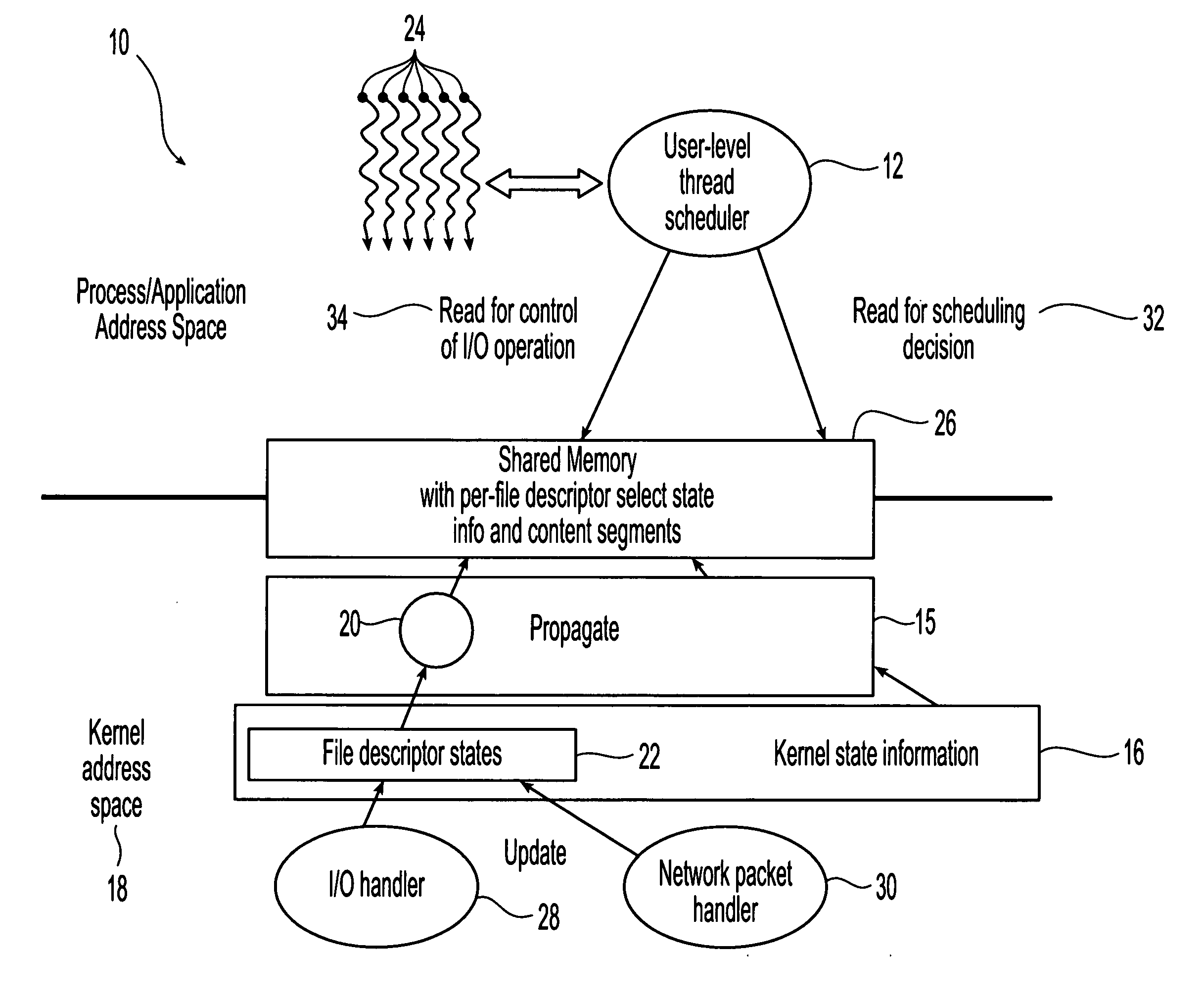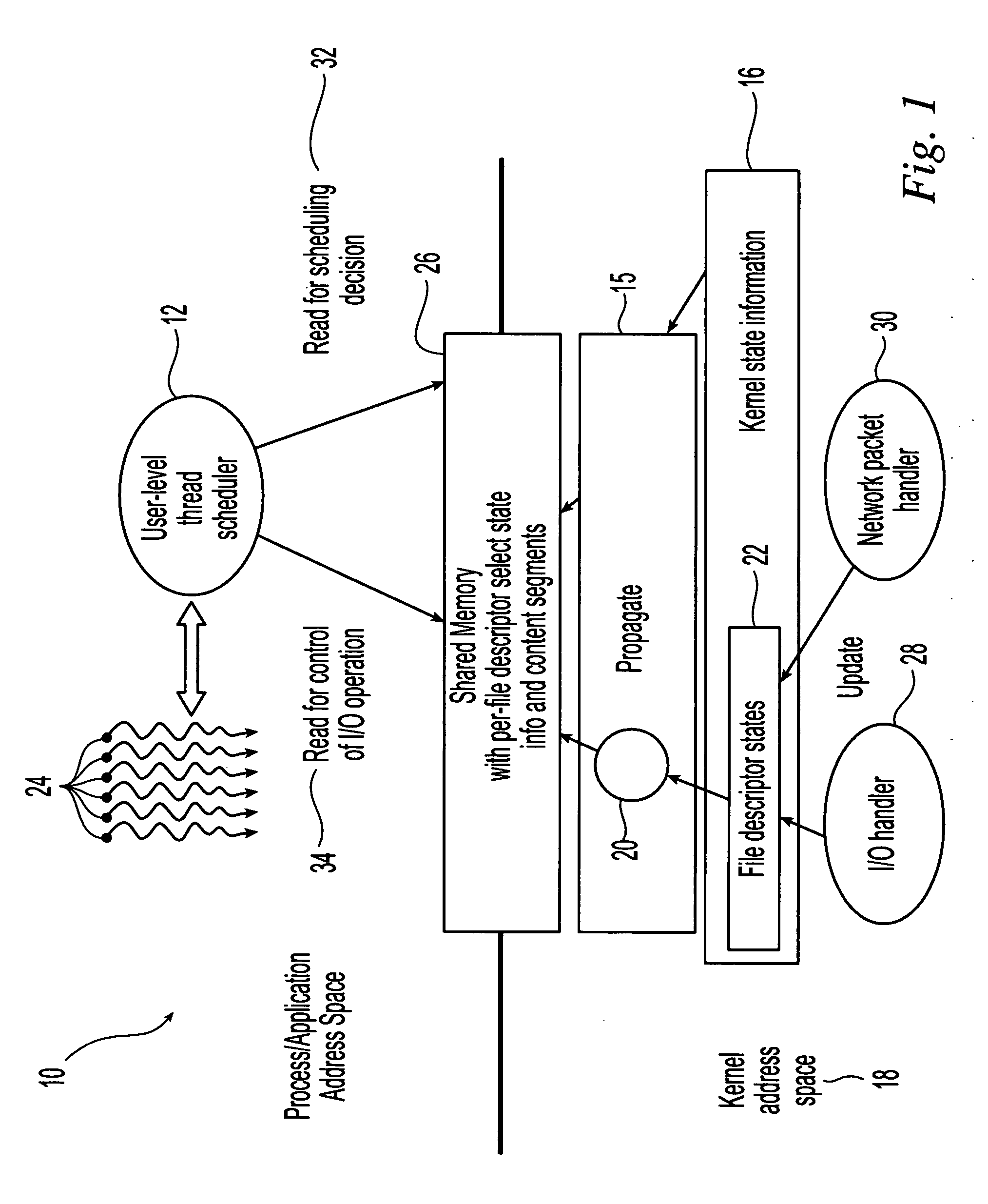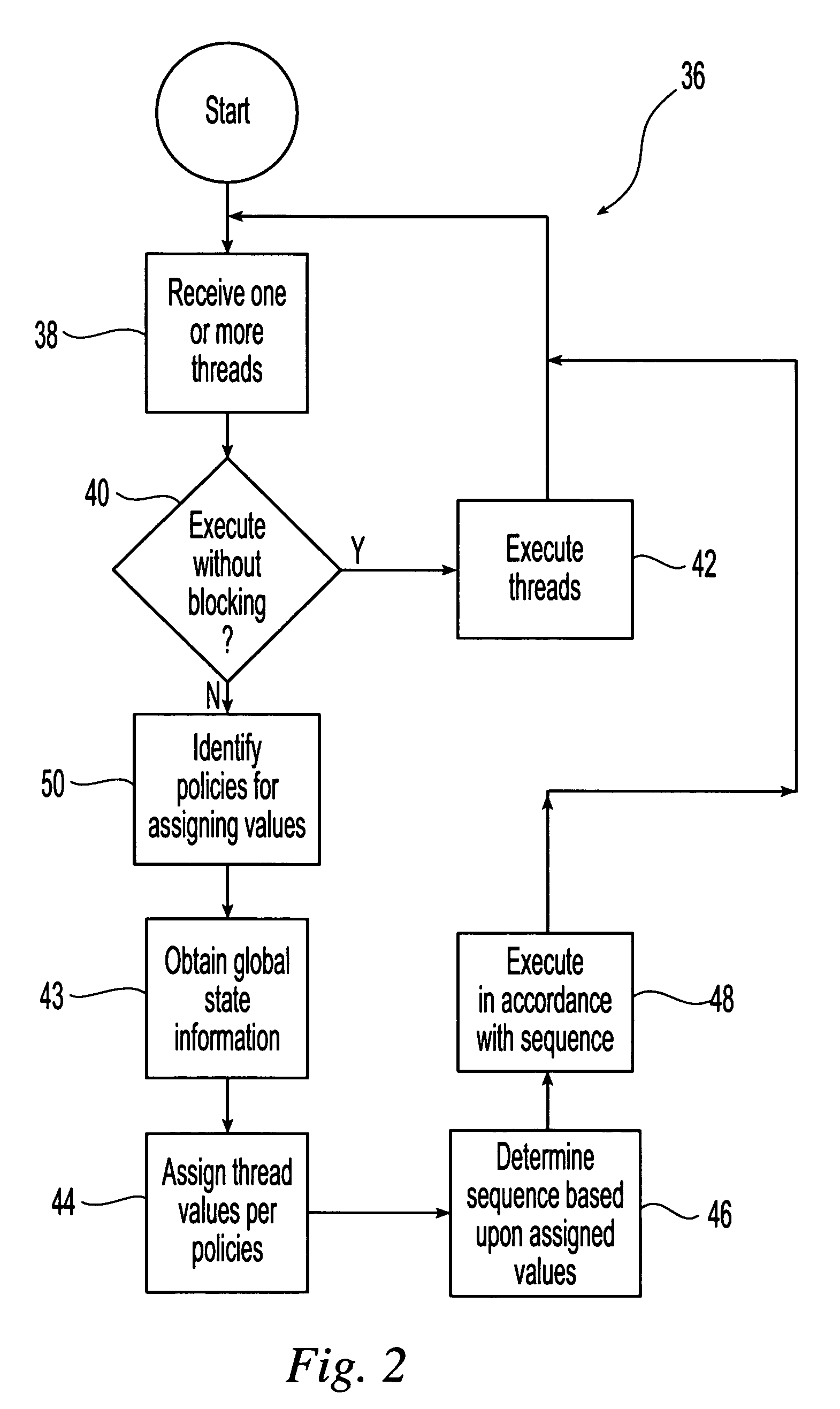Method and system for scheduling user-level I/O threads
a user-level and thread-level technology, applied in the field of user-level thread packages, can solve the problems of i/o operations that cannot be executed without blocking, requires a relatively high overhead, so as to application-level overhead, reduce the number of system calls, and reduce the effect of system calls
- Summary
- Abstract
- Description
- Claims
- Application Information
AI Technical Summary
Benefits of technology
Problems solved by technology
Method used
Image
Examples
Embodiment Construction
[0019] Referring initially to FIG. 1, an embodiment of a user-level thread package 10 in accordance with the present invention is illustrated. The user-level thread package 10 includes a user-level thread scheduler 12 that is capable of scheduling the sequence of execution of a plurality of threads 24 for a user-level process or application based upon kernel-level state information including information to determine if an 1 / 0 operation would block or not and file descriptor information for active files. In order for the user-level thread scheduler 12 to be able to access the information necessary to determine the scheduling sequence of the plurality of threads 24, the user-level thread package 10 has access to or includes at least one user-level accessible memory location 26 in communication with the user-level thread scheduler 12. The user-level memory location is accessible by the user-level thread scheduler without using system calls but with standard memory reads and writes, use...
PUM
 Login to View More
Login to View More Abstract
Description
Claims
Application Information
 Login to View More
Login to View More - R&D
- Intellectual Property
- Life Sciences
- Materials
- Tech Scout
- Unparalleled Data Quality
- Higher Quality Content
- 60% Fewer Hallucinations
Browse by: Latest US Patents, China's latest patents, Technical Efficacy Thesaurus, Application Domain, Technology Topic, Popular Technical Reports.
© 2025 PatSnap. All rights reserved.Legal|Privacy policy|Modern Slavery Act Transparency Statement|Sitemap|About US| Contact US: help@patsnap.com



